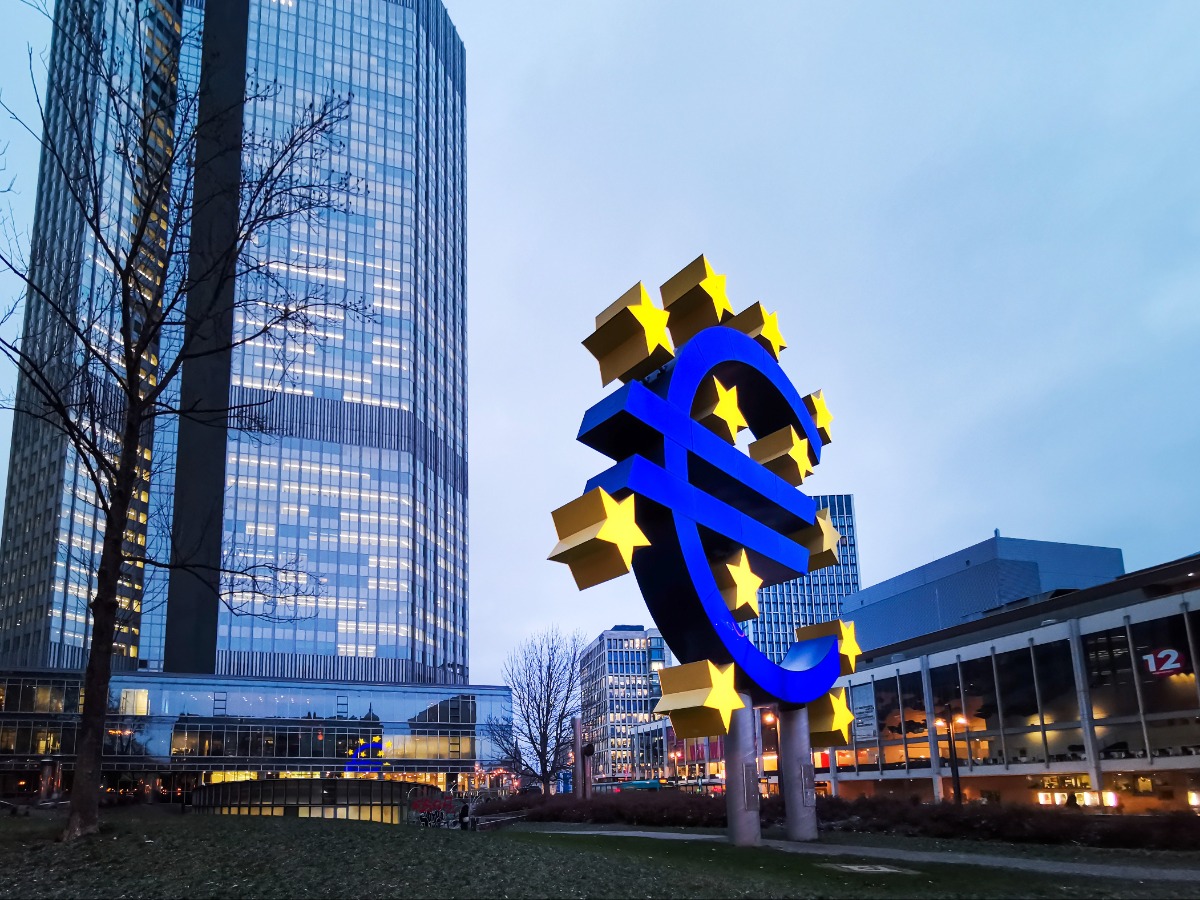Euro Drops Against Pound and Dollar as ECB Softens the Hawkish Tone

The Euro exchange rates fell against the Pound Sterling (GBP) and US Dollar (USD) after the ECB held rates steady in Thursday's meeting after 10 straight hikes.
It was expected the bank would try and balance the dovish shift with a hawkish tone, but this didn’t quite happen.
The lack of anything hawkish on the horizon could weigh on the Euro.
Thursday’s session has been lively with more large drops in stock markets, a –3% move in oil and some focused volatility in forex markets. The day’s main event was the ECB which delivered no real surprises as rates were held steady. Meanwhile in the US, GDP data showed the economy grew 4.9% in Q3, higher than the expected 2.1% and more than justifying the rally in yields. This is good news for the US dollar and bad news for stocks, although the USD has been looking heavy in recent weeks and has made lower highs since the start of October.
The Euro is weakest among G7 currencies following the ECB meeting and press conference but is still comfortably at higher lows against the US dollar and the British Pound. Indeed, the –0.3% drop in EURGBP takes the pair back to the 0.87 level which was the point of the earlier break-out and could act as a bearish/bullish inflection going forward. While the meeting delivered no real surprises, the tone was less hawkish than some may have hope for, and Euro bulls were given little to be optimistic about.
The ECB held rates steady after 10 straight hikes. This was completely expected following the last meeting and fully priced in. However. The consensus view was that the bank would maintain a hawkish rhetoric in order to prevent yields from fading lower. This wasn’t exactly the case and is one reason behind the Euro’s weakness following the meeting.
Many of the references to the economy were gloomier than previous meeting and it seems recent data has influenced the bank’s outlooks. For instance, the projection for a return to growth as early as Q1 next year has been changed to now say “the economy should strengthen over the coming years." This is about as vague as possible and lacking any optimism. As ING point out:
“At today’s meeting, Lagarde sounded more cautious than in previous meetings, referring to the latest disappointing macro data and tentative signs of a weakening of the labour market...Lagarde referred to a further unfolding of the monetary policy transmission over the coming quarters, making a significant downward revision to the ECB's staff projections at the December meeting very likely.”
Signs of weakness in the EU economy are nothing new. Many countries have been stagnating all year and weak PMIs suggest this will continue. It’s a far cry from the US which just reported 4.9% growth in the third quarter.
The surprise was that the ECB made little effort to maintain a hawkish tone despite the data like they have in previous meetings. Pausing rates is a dovish shift and it would be normal to balance this out with a hawkish tone. Some even expected some reference to reducing the balance sheet or other tightening measures to replace rate hikes. Reinvestments under the Pandemic Emergency Purchase Programme (PEPP) are currently scheduled to continue to “at least until the end of 2024” which is obviously a long way away. The ECB could bring this forward as a form of tightening, but there was no mention of this or any other alternative hawkish measures. Indeed, Lagarde said that the topic of its bond portfolio has not yet been discussed.
The lack of any hawkish developments will weigh on the Euro as it increasingly looks like the ECB has finished hiking and is shifting slowly dovish. Only an unexpected upturn in the EU economy would shift the situation which looks unlikely given recent data and the many headwinds. EURUSD has fallen to 1.053 and is closing in on the 2023 low of 1.044.
